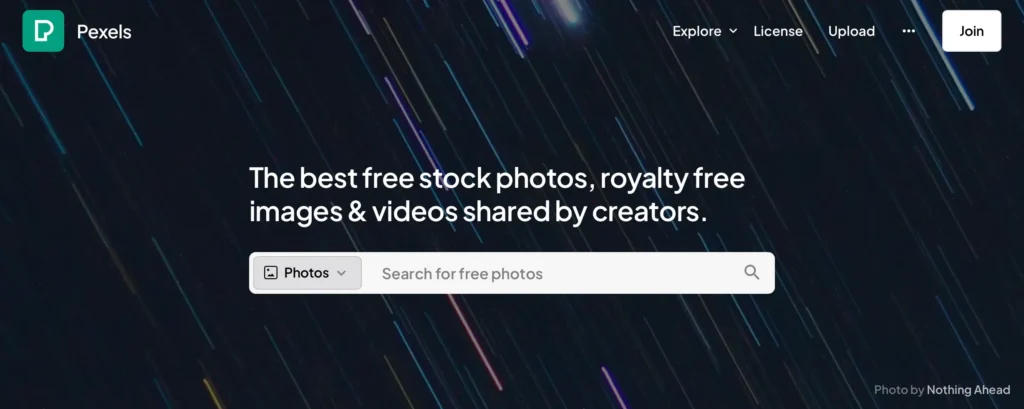Our team at SaneChoice and industry experts craft our articles to help you gain a deeper understanding of technology.
Unlocking Visual Potential: Top Websites for Free Image Downloads

Visual content reigns supreme, shaping how audiences interact with websites and digital platforms. This article delves into the significance of visual content and free image downloads and identifies the top websites where high-quality images can be obtained without cost. Additionally, it provides insights on selecting appropriate images, downloading and using them effectively, the legal considerations involved, and tips for optimising images for SEO. By understanding these elements, website owners and content creators can significantly enhance their site’s visual appeal and user engagement.
Introduction to Visual Content and Its Importance
The digital environment is inherently visual. From websites to social media, visual content plays a pivotal role in capturing attention, conveying messages, and engaging audiences. It transcends the text barrier, offering a universal language that speaks to the viewer’s emotions and imagination. The power of an image, graphic, or video lies in its ability to communicate complex ideas and evoke responses instantly. This immediate impact is crucial in the fast-paced world of the internet, where capturing user interest within seconds is vital for retention and engagement.
Visual content enhances comprehension and recall. Studies have shown that people remember visual information far better than text alone. This is because the human brain processes images much faster than words, making visual content a highly effective tool for communication. In digital marketing and website development, leveraging visual content can significantly boost a brand’s visibility, message retention, and audience engagement.
However, creating original, high-quality visual content can be resource-intensive, requiring time, skill, and sometimes financial investment. This challenge leads many to seek alternatives, such as free image downloads, which offer a practical solution to enriching websites and digital platforms with appealing visuals without the associated costs of custom content creation.
Why Use Images on Your Website
Images are not merely decorative elements but critical in enhancing a website’s design, usability, and overall message. Firstly, they break up large blocks of text, making content more digestible and appealing to readers. This visual interruption aids in maintaining the user’s interest and encourages them to continue engaging with the content. Secondly, images can convey complex messages and emotions more efficiently than text. A well-chosen image can illustrate a point, evoke a feeling, or create a connection with the audience, often more powerfully than words alone.
Furthermore, incorporating images into a website improves its SEO performance. Search engines recognise the value of visual content and index images and consider them in their ranking algorithms. By including relevant images with appropriate alt text, websites can attract more traffic through image search results. Additionally, images can enhance the website’s social media visibility. Visual content is more likely to be shared, increasing the site’s reach and driving additional traffic.
Another critical consideration is a website’s aesthetic appeal. High-quality, relevant images contribute to a site’s visual design, creating a professional and appealing online presence. This visual appeal can significantly impact the user’s perception of a brand, influencing trust, credibility, and the likelihood of engagement.
The Concept of Free Image Downloads
The internet abounds with resources offering free image downloads, granting access to vast libraries of high-quality images without a financial outlay. These platforms provide a solution to the demand for affordable visual content, enabling creators, marketers, and website owners to enhance their digital presence effectively. The concept of free image downloads is built on sharing resources, often under licenses that allow for commercial use with little or no restrictions.
However, it’s crucial to understand the different types of licenses associated with free images to ensure their appropriate use. The most common types include Creative Commons licenses, which specify how the images can be used and if attribution is required, and royalty-free licenses, which allow for the unrestricted use of images without compensating the creator. Understanding these licenses is essential to avoid legal pitfalls and ensure that the use of free images aligns with ethical standards and copyright laws.
The availability of free images has democratised access to high-quality visual content, allowing individuals and organisations of all sizes to compete on a more level playing field. With the right resources, even websites with limited budgets can boast professional, visually captivating designs that engage and retain their audience.
Top Websites for Free Image Downloads

Navigating the plethora of websites offering free image downloads can be overwhelming. To simplify this task, here is a curated list of reputable platforms where high-quality, free images can be sourced:
- Unsplash: Renowned for its vast collection of beautiful, high-resolution images contributed by photographers worldwide, Unsplash offers an intuitive interface that makes finding the perfect image for your website a breeze.
- Pixabay: With a comprehensive library that includes photos, illustrations, vector graphics, and videos, Pixabay is a versatile resource for all types of visual content.
- Pexels: Pexels provide many stylish and contemporary images, ideal for websites that convey a modern, youthful vibe. Its collection is solid in lifestyle and tech-related imagery.
- StockSnap.io: Known for its high-quality, diverse image collection, StockSnap.io adds hundreds of images every week, ensuring a constant supply of fresh content.
- Burst by Shopify: Aimed at entrepreneurs and e-commerce websites, Burst offers images specifically curated to enhance online stores and marketing materials.
These websites stand out not only for the quality and variety of their collections but also for their user-friendly interfaces and straightforward licensing, making them excellent sources for free image downloads.
Tips on Choosing the Right Images for Your Website
Selecting the appropriate images for your website involves more than opting for visually appealing content. It requires a strategic approach that considers the site’s message, audience, and overall design. Here are some tips to guide the selection process:
- Relevance: Choose images that are directly related to the content they accompany. Relevant images enhance the user’s understanding and retention of the information presented.
- Quality: High-resolution, well-composed images reflect positively on your website’s professionalism and credibility. Avoid using low-quality or pixelated images, as they can detract from the user’s perception of your site.
- Diversity: Incorporate a variety of images, including photographs, illustrations, and infographics, to maintain the user’s interest and cater to different preferences.
- Brand Consistency: Ensure the images align with your brand’s aesthetic and values. Consistent visual branding helps reinforce your identity and message.
- Emotional Impact: Consider the emotional response you wish to evoke in your audience. Images that trigger an emotional connection can significantly increase engagement and conversion rates.
By adhering to these guidelines, you can select images that beautify your website and strengthen its message and effectiveness.
How to Download and Use Images Effectively
Downloading images from free resources is typically straightforward, but following each website’s specific procedures and respecting any licensing requirements is essential. Here’s a general process for downloading and using images effectively:
- Search and Select: Use keywords or browse categories to find images that fit your needs. Use advanced search filters to narrow down the results.
- Check the License: Review the image’s license before downloading to confirm that it matches your intended use. Pay attention to any attribution requirements.
- Download the Appropriate Size: Many websites offer images in various sizes. Download the size that best suits your needs, keeping in mind the balance between quality and file size to ensure optimal website performance.
- Customise: Consider customising the image to better suit your website’s layout and design. Cropping, adjusting brightness, or adding text can personalise images and integrate them seamlessly into your content.
- Optimise for Web: Before uploading the image to your website, optimise it for the web to reduce file size without compromising quality. This step is crucial for maintaining fast page load times.
Following these steps, you can effectively incorporate free images into your website, enhancing its visual appeal and user experience.
Legal Aspects of Free Image Downloads
While free image download platforms offer a convenient resource, navigating the legal landscape carefully is imperative to avoid copyright infringement and potential legal issues. Understanding the licensing terms is the first step in ensuring that the use of free images complies with legal requirements. Here are key considerations to keep in mind:
- Attribution: Some licenses require users to credit the image creator or source. Failing to provide proper attribution can lead to legal challenges, so adhering to these requirements where applicable is essential.
- Usage Restrictions: Even with free images, certain limitations may apply, such as restrictions on commercial use or modifications to the original image. Review the license terms carefully to understand these constraints.
- Liability: It’s important to note that using an image in a defamatory, obscene, or otherwise unlawful manner can expose the user to legal liability, regardless of the image’s license.
By respecting these legal aspects, website owners and content creators can use free images responsibly and ethically, mitigating the risk of legal complications.
Optimising Images for SEO
Optimising images for search engines is critical to enhancing a website’s visibility and performance. Here are strategies to ensure that your images contribute positively to your SEO efforts:
- Use Descriptive Filenames: Instead of generic filenames, use descriptive, keyword-rich names that reflect the image content. This practice helps search engines understand and index the image more effectively.
- Include Alt Text: Alt text provides a textual description of an image for search engines and users who cannot see the images. Including relevant keywords in the alt text can improve your image search rankings.
- Compress Images: Large image files can slow down your website, negatively affecting your search engine rankings. Use image compression tools to reduce file sizes without compromising quality.
- Use Responsive Images: Use responsive design techniques to ensure your images are mobile-friendly. This approach improves the user experience across devices and improves SEO performance.
By implementing these SEO best practices, you can maximise the impact of your images on your website’s search engine ranking and visibility.
The Impact of Visual Content on User Behaviour
The influence of visual content on user behaviour is profound and multifaceted. Engaging images can significantly increase visitors’ time on a website, reduce bounce rates, and encourage interactions. Visuals also play a crucial role in decision-making processes, with compelling images capable of swaying user opinions and prompting actions, such as purchases or social media shares.
Furthermore, visual content enhances memory retention and brand recall, making it a powerful tool for building brand awareness and loyalty. Images’ emotional resonance can forge a deeper connection between the brand and its audience, cultivating a sense of trust and affinity.
In social media, visual content is indispensable for driving engagement and virality. Posts with images consistently outperform text-only content regarding likes, shares, and comments, amplifying the brand’s reach and impact.
Conclusion: Unlocking Your Website’s Visual Potential
In the digital landscape, where competition for user attention is fierce, leveraging visual content is not just a luxury but a necessity. Free image downloads offer a valuable resource for enriching websites and digital platforms with high-quality visuals without substantial investment. By understanding the importance of visual content, selecting the right images, adhering to legal guidelines, and optimising SEO, website owners and content creators can unlock their site’s visual potential, enhance user engagement and achieve their digital goals.
Embrace the power of visuals and transform your website into a captivating, memorable digital experience that resonates with your audience and propels your brand towards its objectives.